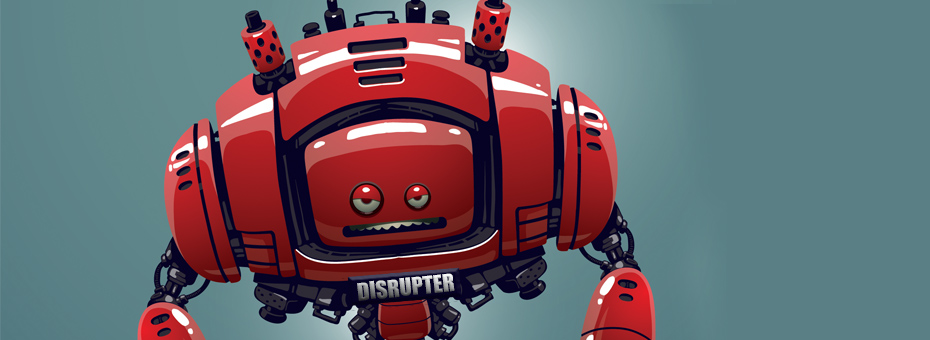Toyota is likely not the first company you think of when you think of breakthrough innovation and industry disruption. In fact, Toyota is far more likely to be thought of as a conservative, efficient, even boring manufacturing company. And that would not necessarily be wrong. The company is certainly not known for rock star executives or hyperbolic and grandiose proclamations about the future. The company takes a quieter, more cadenced, and far more humble approach to designing the future. Toyota believes in under promising and over delivering.
And deliver they do. In 2017 Toyota sold 10.5 million vehicles around the world, second only to VW who sold 10.7 million. Toyota’s market cap was the largest among automakers by far, at about $184 billion (coming in second is VW at about $71 billion), with a profit margin that was nearly 7% with the lowest vehicle incentives of any company. Toyota and Lexus topped Consumer Reports for quality the last four years and have led JD Power and other quality research firm surveys for many more. I could go on, but I think most would agree that Toyota is a formidable competitor and arguably the best carmaker on the planet.
Despite fairly broad recognition of Toyota’s success, very few people recognize how its willingness to challenge the status quo through breakthrough product and process design has fueled Toyota’s growth and success. In fact, I believe that over the past 40 years, Toyota, more than any other car company, has driven dramatic and fundamental change in the auto industry through the introduction of disruptive processes and breakthrough products. In many ways Toyota has created the modern auto industry we see today. And I believe they will continue to influence the future of the auto industry, perhaps more than any other company through their incredible product and process development capability.
Toyota’s approach is built around accepting a difficult challenge, working hard in small and steady steps as a team, learning through continuous experimentation, and never, ever being satisfied with the company’s current performance level in the pursuit of perfection. Over those forty years Toyota introduced hundreds of industry firsts, but let’s consider four game changing examples:
The machines that changed the world: Seamless integration of product and process development to delivermaximum customer value across the entire value stream.
Toyota’s history of industry disruption started with the introduction of high quality, fuel efficient, safe, low cost cars that completely changed customer’s expectations and rocked the auto establishment. These products forced dramatic change on the auto industry and had ripple effects across many others. While TPS is rightly recognized as the powerful manufacturing system that helped to enable this change, it was game changing product and process designs that underpinned a set of products and a cadence of new product introduction that transformed the industry. Designs that set a new benchmark for product quality and reliability for the industry that competitors chase to this day. John Shook often talks about the radical difference between the product and process designs GM Freemont workers struggled with compared to the “snap together” high quality designs NUMMI team members received.
Lexus: Pursue product perfection.
In 1983 Eiji Toyoda challenged the Toyota team to build nothing less than the world’s best car. Back then even the thought of Toyota entering the luxury car market was laughable. And that’s what many auto execs did – much to their detriment. Lexus was launched in 1989 and by 1991 had outsold both Mercedes and BMW to become the best-selling luxury brand in the US and ranked number one in JD Power for initial quality and customer satisfaction. The upstart luxury brand had challenged the status quo of the European luxury set and raised the bar such that they became the leading luxury brand by sales in just three years and eclipsed North American luxury brands. While the luxury car market is small in terms of units sold, only about 10%, it is very important to revenue and provides as much as 50% of the profit to some auto companies. The brand would go on to sell more than 300,000 units by 2005 and hold the title of best selling luxury brand until 2011 when it lost its position after a tsunami and earthquake rocked its production and supply chain in Japan. As of this writing Lexus has the best-selling luxury SUV and in the words of Benjamin Zhang of Business Insider: “There is no debate: Lexus is the biggest success story in the auto industry over the last 25 years” (Benjamin Zhang, Business Insider, October 2014).
Prius: Never be satisfied and continuously raise the bar for product, process and people.
Long before anyone in the auto industry was even thinking about designing for environmental sustainability, in 1997 Toyota introduced the first gas–electric hybrid, the Prius. In 1990, during a period of incredible success, Toyota Chairman Eiji Toyoda threw down the gauntlet by asking “how will we keep from growing complacent as a company?” He challenged his R&D team to dramatically improve they way they developed products and create a breakthrough product for the 21stcentury. Once again much of the industry sneered at the oddly designed vehicle and predicted that at best it would be relegated to a tiny niche player.
However in Prius, Toyota had designed a product that created demand where none had previously existed and once again forced the rest of the industry to follow their lead. Clearly the hybrid was a great success, with cumulative sales of over 6 million Prius, and over 10 million hybrid vehicles by January 2018. What’s more, the Prius provided the model for later sustainable vehicles to follow.
Mirai: Take the long view, work a set-based approach to unknowable future technologies and experiment to learn.
Mirai means future in Japanese and this hydrogen powered vehicle may be Toyota’s most bold experiment yet. I understand the raging debate about the potential efficacy of fuel cells as an alternative source of energy and quite frankly found the amount of vitriol on the Internet regarding this topic alarming. However, many attackers seem to be missing two key points: 1) Toyota continues to invest heavily in several different technologies including battery electric, hybrid and hydrogen power in a variety of vehicle types. 2) From the beginning the Mirai team knew that they were working on a product that would not receive broad acceptance for many years, likely decades. Yoshikazu Tanaka, the Mirai CE, told Jeff Liker and I in an interview in Japan:
“Hydrogen is something we never expected to suddenly spread. Hydrogen use will not suddenly start just because of this car. We were thinking very long term. In fact, we often used the phrase 100 years from now to provide the team with the right image. We wanted to be the ones who are pioneers in starting this movement toward a hydrogen-based society.” Tanaka went on to say“We know we are just one small stone in the big sea. There is no guarantee of success, but if you do not do anything, if you do not take a first step, then nothing will happen.”
The Mirai is one important piece of a long-term strategy for the company to reduce CO2 emissions by 90%. However, unlike companies such as Tesla, Toyota plans a set based approach to meet the challenge. Mitsumasha Yamagata, Chief Engineer in Toyota Power Train Product Planning, forecasts that up to 90% of all vehicles in 2030 will still use some form of petrol engine and explained:
“Developing the most fuel-efficient powertrains using petrol engines and hybrid systems will be the best way to have an impact (on reducing emissions), and we remain committed to this. At the same time we will be able to use the technology developed for the powertrains in EVs and FCVs.”
This is consistent with studies by organizations such as the Center for Automotive Research (CAR) that found “Mirai is Toyota’s most challenging development project yet because it requires not only breakthrough product but the transformation of entire global infrastructure. Yet they are approaching it with the same process of a challenge, deep learning, experiments, hard working teams taking incremental steps toward a compelling vision.”
A “blue-collar” model of disruption?
As I said, Toyota may not be the first company you think of for disruptive product and process development, but perhaps they should be. The methods and practices that Toyota uses have been adapted and applied successfully by companies large and small, in a wide variety of industries and in places all over the world. And that is precisely why LPPD is important: Because it is so accessible by so many. You do not need a rock star genius CEO and you don’t have to be a Silicon Valley startup to continuously develop industry best products and processes and design the future. And what may be even more important; in addition to being highly effective, LPPD principles and practices create a more respectful, far healthier, and much more “adult” environment for team members. And that might just disrupt the disrupters.
This article is adapted from the forthcoming book “Designing the Future” by James Morgan and Jeffery Liker.






